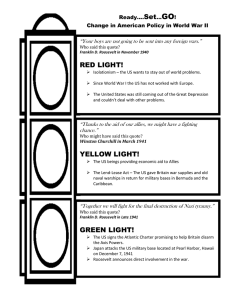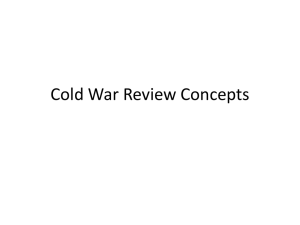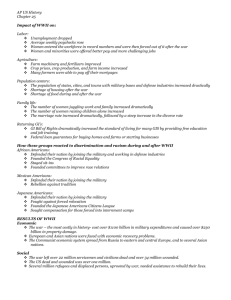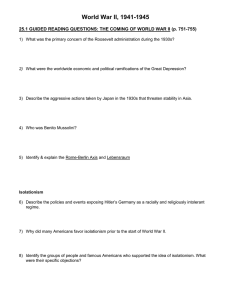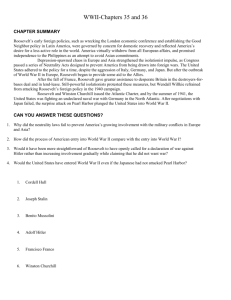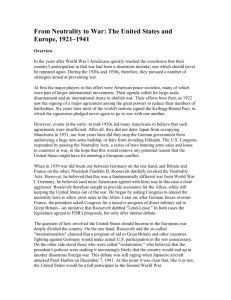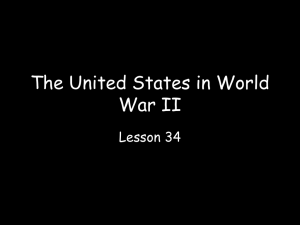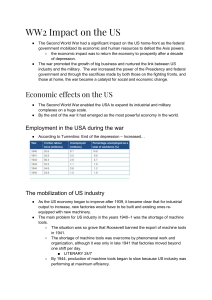World War II European Theater of Operations Building the Alliance
advertisement
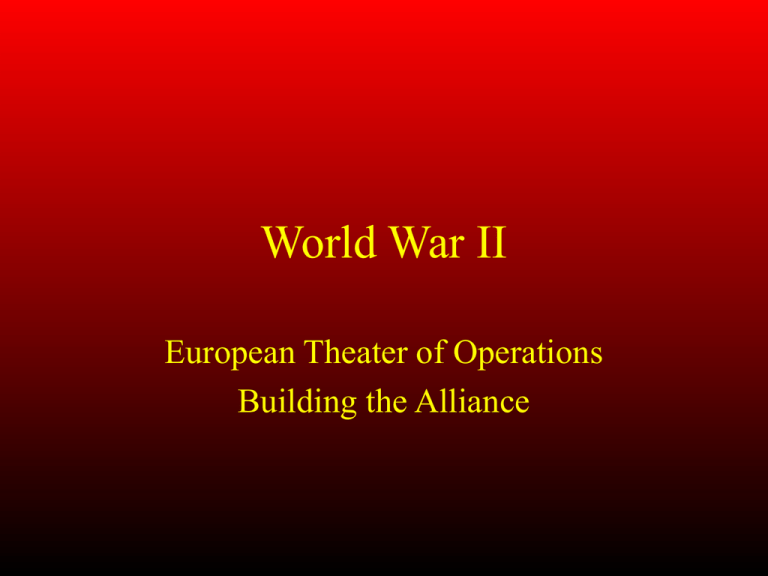
World War II European Theater of Operations Building the Alliance The Tripartite Pact 27 September 1940 Berlin, Germany Saburo Kurusu of Imperial Japan Adolf Hitler of Nazi Germany Galeazzo Ciano foreign minister of Fascist Italy Also signed by: Hungary Rumania Bulgaria Kingdom of Yugoslavia The Atlantic Conference 14 August 1941 Issued the Atlantic Charter Great Britain – Winston Churchill United States – Franklin D. Roosevelt Unanimously approved at the Inter-Allied meeting in London, September 1941 No territorial gains were to be sought by the United States or the United Kingdom. Territorial adjustments must be in accord with the wishes of the peoples concerned. All peoples had a right to self-determination. Trade barriers were to be lowered. There was to be global economic cooperation and advancement of social welfare. Freedom from want and fear; Freedom of the seas; Disarmament of aggressor nations, postwar common disarmament Height of Axis Power Expansion Operation Barbarossa Germany invades USSR July 1941 “So long as Russia is preoccupying Hitler … we should and will do everything in our power to aid Britain …” November 1941 Roosevelt proclaims the survival of the Soviet Union vital to the defense of the United States and orders Lend Lease extended to the Soviets America’s Entry into the War Isolationism America had shown remarkably little interest, prior to 1941, in how the rest of the world was governed. Repressive regimes elsewhere might be regrettable, but they could hardly harm the United States. Pearl Harbor The Japanese attack on Pearl Harbor immediately and irrevocably shattered the illusion that distance ensured safety – the nation’s security was now at risk and since others might follow the example of Japan, the US had to assume global responsibilities. Day of Infamy Forming a New Alliance Although tensions between the so-called “Big Three” (Roosevelt, Churchill and Stalin) continued throughout the war the tensions never became greater to any of the “three” than the overall pursuit of victory. The tension existed largely because of ideological differences between the US and the USSR – one capitalist, the other communist; one authoritarian, the other republican. The Soviets never forgot the US armed intervention in the Russian Civil War (1917-1923) and the US refusal to recognize the Soviet state until 1933. Finally, future tensions would arise as Stalin continually demanded the Great Britain and the United States open a second, Western Front, once the US entered the war. The Grand Alliance Joseph Stalin Franklin D. Roosevelt Winston Churchill The Allies’ Strategic Dilemma How to Coordinate the efforts of the Allies? Stalin demanding a “second front” since July, 1941 Roosevelt wanted to invade Europe in 1942 Churchill wanted to avoid an invasion of Europe The American public demanded immediate reprisals against Japan Components of the War in Europe The Naval War The Air War The Ground War
